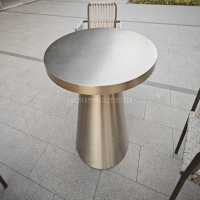Welcome to the website for landscape facilities products and knowledge.
How does the table handle temperature fluctuations, especially in non-climate-controlled environments?
Modern tables employ sophisticated material science and engineering principles to maintain structural integrity when facing temperature variations in non-climate-controlled spaces. The fundamental challenge lies in managing thermal expansion and contraction - the natural tendency of materials to expand when heated and contract when cooled. High-quality furniture addresses this through strategic material selection, with engineered wood products offering superior dimensional stability compared to solid wood, while powder-coated metals provide enhanced resistance to thermal stress.
Manufacturers implement several key strategies to combat temperature-related issues. Cross-grain construction in wooden tables creates opposing forces that naturally counteract warping tendencies. Expansion joints and strategic fastening systems allow for controlled movement without compromising structural integrity. Composite materials with balanced composition ratios ensure uniform expansion rates across the entire table surface, preventing localized stress points that could lead to cracking or joint failure.
The performance gap between premium and budget furniture becomes particularly evident in environments with significant temperature swings. Quality tables incorporate moisture-resistant adhesives that maintain bond strength despite repeated thermal cycling, while advanced finishing systems create flexible protective layers that move with the underlying material. For metal components, alloys with low thermal expansion coefficients minimize dimensional changes, and strategic isolation techniques prevent problematic heat transfer between dissimilar materials.
Environmental factors beyond direct temperature also play crucial roles. Tables designed for unstable environments often feature enhanced humidity resistance, as moisture content significantly influences how wood responds to heat. Advanced manufacturing techniques include stress-relieving processes that pre-stabilize materials, much like tempering in metallurgy, creating furniture that maintains its form and function through seasonal changes and unpredictable environmental conditions.
Related search:

Recommendation
Outdoor Metal Table - Classic Outdoor Furniture, Stainless Steel Table, Durable and Reliable